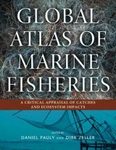Art / Photobook
New
By: Michael J Hambrey(Author), Jürg C Alean(Author)
256 pages, 230 colour photos, 1 b/w illustration
![Our Frozen Planet Our Frozen Planet]()
Click to have a closer look
About this book
Contents
Customer reviews
Biography
Related titles
About this book
This book is a celebration of the disappearing world of ice and snow, or what scientists know as the cryosphere. Although frozen water represents a significant component of planet Earth, it is rapidly declining, both in area and volume in response to global warming. The next few generations of humanity will see unprecedented change in ice and snow cover, so now is the time to place on record the magical beauty of such areas.
The two authors have each studied glaciers for half a century, both as researchers and educators. We have had the opportunity to work in both polar regions, as well as several of the world's major mountain ranges. They examine ice and snow on all scales, from the mighty glaciers and ice sheets that still cover ten per cent of Earth's land surface to frozen puddles and fluffy snow. We illustrate how a myriad of snowflakes are transformed into glacier ice, which then flows under the influence of gravity, and finally disappears through melting. They illustrate how glaciers have eroded Earth's surface to produce some of our most stunning landscapes, and the importance of deposition of debris to the provision of rich soils. They explore ice in the ocean, on lakes and in rivers, and the illustrate the delicate beauty of frost and snow. Finally, they show some of the ways in which plants, animals and humans interact with the Cryosphere.
Our Frozen Planet serves as a reminder of what we are losing, but also gives us the courage to tackle the global climate emergency.
Contents
Chapter 1 - The cryosphere: the world of snow and ice
Chapter 2 - Snow
Chapter 3 - Ice from the atmosphere
Chapter 4 - Frozen rivers and lakes
Chapter 5 - Frozen oceans
Chapter 6 - Glacier ice
Chapter 7 - Disappearing glaciers and shrinking ice sheets
Chapter 8 - Melting glaciers
Chapter 9 - Nature's debris conveyor
Chapter 10 - Where glaciers meet the sea
Chapter 11 - Glaciers' landscape legacy
Chapter 12 - Life in a frozen world
Chapter 13 - Snow, ice and society
Chapter 14 - A farewell to ice and snow
Customer Reviews
Biography
Michael Hambrey is an Emeritus Professor of Glaciology and former Director of the Centre for Glaciology in the Department of Geography & Earth Sciences at Aberystwyth University, Wales, UK. He was also founding director of the Climate Change Consortium of Wales. His research interests include glacial geology and structural glaciology. He has published nearly 200 scientific papers and several books, including university-level textbooks Glacial Environments (1994) and, with Jurg Alean, Colour Atlas of Glacial Phenomena (2017). In addition, Michael has co-written popular science books Glaciers (2nd edition, 2004) and Gletscher der Welt (2013) with Jürg Alean, and Islands of the Arctic (2002) and The Continent of Antarctica (2018) with Julian Dowdeswell.
Jürg Alean was formerly a teacher of geography at the Kantonsschule Zurcher Unterland in Bulach, Switzerland. He has undertaken extensive fieldwork in the Swiss Alps, the Canadian Arctic, Alaska and South America. His research has led to various scientific papers, in particular concerning dangerous glaciers and ice avalanches. He has also published many popular scientific articles and several books, for example, Gletscher der Alpen (2010) and Gletscher der Welt (2013), as well as those mentioned above with Michael Hambrey.
Art / Photobook
New
By: Michael J Hambrey(Author), Jürg C Alean(Author)
256 pages, 230 colour photos, 1 b/w illustration





























![Fruit: Edible, Inedible, Incredible [Compact Edition]](http://mediacdn.nhbs.com/jackets/jackets_resizer_medium/21/210512.jpg?height=150&width=163)







